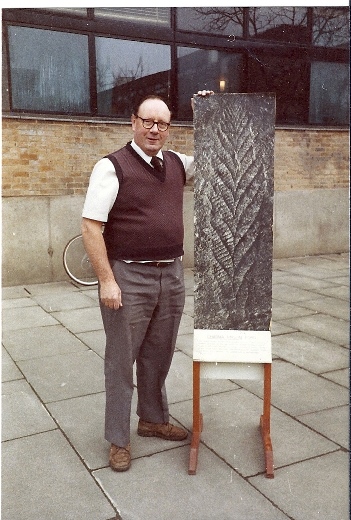 Geologist and science writer Nina Morgan celebrates some serendipity
Geologist and science writer Nina Morgan celebrates some serendipity
The Leicester University geologist Trevor Ford [1925 – 2017] – the geological guru of the Peak District in Derbyshire - was not only known for his expertise on the geology of the decorative fluorite known as Blue John (see Distant Thunder, August 2017). He was, by all accounts an inspirational teacher and taught in the Geology Department of the University of Leicester for 38 years. As well as producing more than 500 research papers, articles, reviews and guidebooks covering the minerals, mines, karst and caves of the Peak District, he also edited the journals of a number of local societies. And, it seems, he possessed a knack for finding himself in the right place at the right time. Perhaps ‘serendipity’ was his middle name.
But whatever the case, he certainly possessed the willingness, enthusiasm and ability to think outside the Peak District 'box' to enable him to make important contributions in areas ranging from astrogeology to palaeontology.
Right place, right time
In 1957, when a Leicester schoolboy - Roger Mason - found what appeared to be a fossil in supposedly non-fossiliferous Precambrian rocks of Charnwood Forest, Ford just happened to be the only lecturer present in the Geology Department when Mason turned up to report his find. Although the accepted knowledge at the time was that fossils don't occur in Precambrian rocks, Ford took Mason seriously and drove out to Charnwood with him to examine the fossil.
Described and named by Ford in 1958, Charnia masoni turned out to be the first Precambrian fossil to be recognised, and opened up a fruitful new field of research. The experience led Ford to go on to make important contributions to the study of Precambrian rocks in Australia, Sweden, Canada and the United States.
Wrong place, right time
But in the end, he always returned to his base at Leicester University and his studies of the Derbyshire Peak. As a result he found himself right on the spot in December 1965 when one of the largest meteorites recorded in British history landed in the village of Barwell near Leicester, sparking off a 'meteorite gold rush'. Museums offered money for every fragment found; meteorite hunters from around the world flocked to the area and search parties rushed into action. For some local residents, the meteor strike was like manna from heaven. One local resident who a five-pound fragment while digging around the sprouts in his allotment received the princely sum of £39 10s for it – enough to take his family on a week's holiday in Great Yarmouth.
Ford joined the team from the Geology Department at Leicester to search for samples, but apparently misunderstanding the joining instructions, he turned up on time, in the wrong place. Undaunted, he walked out into an adjacent field and discovered a five- kilogramme chunk of the meteorite lying in a half-metre deep crater. This turned out to be the largest single sample of that meteorite ever found. When he eventually joined up with his Department colleagues, he learned that they had only managed to find tiny fragments.
Even in the wrong place, some people, it seems, have a knack for getting things right!
Acknowledgements
Sources for this vignette include: Trevor Ford (1925 – 2017) a great geologist by Tony Waltham, Geology Today ,33, no 5, September-October 2017; Incoming! (Granta Books) by Ted Nield ISBN 978-1-84708-241-1; Close encounters of the meteoric kind, available here. Read his Society obituary which was also published in Geoscientist 27.10 November 2017.
* Nina Morgan is a geologist and science writer based near Oxford. Her latest book, The Geology of Oxford Gravestones, is available via the Gravestone Geology website.